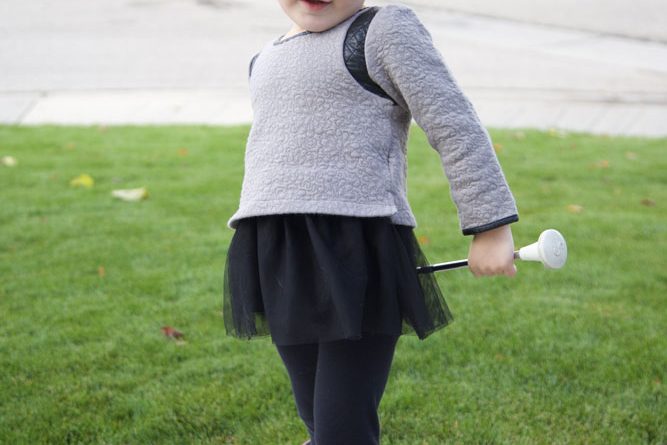Family raises awareness of alopecia
By Miriam Ostermann, Associate Editor


Miriam Ostermann Photo
That’s because Cadence has alopecia, a very rare, highly unpredictable, non-contagious autoimmune disease that attacked her hair follicles when she was only one year old, leaving her without eyebrows, eyelashes or hair on her head. While the Langdon family has found a lot of support with alopecia support groups and community members, they have had to endure people staring, pointing and often mistakenly assuming Cadence is battling cancer.
Then, last week, Cadence’s preschool announced a wacky hair day that left the family emotional and disheartened with the lack of acknowledgment and concern for the family. While her mother, Trina, made the best of the situation by pulling out eyeliner and Halloween make up to paint a sunflower on Cadence’s head, she wants to raise more awareness about the condition that affects thousands of people in Canada.
“This day brought tremendous emotion for us and we didn’t want her to be upset about being different or feeling left out,” Trina Fleming said. “We decided we had three options: ask the school to cancel it, not attend classes that day or do it the alopecia way – with courage and creativity.
“I was wondering why would you have that when you have a kid with alopecia? I feel like they should have said something to me. The preschool is lovely, but I think that’s why awareness is needed.”
Cadence was born with thick and strong strawberry blonde hair, but around her first birthday in September – also known as Alopecia Month – the parents noticed her hair thinning. By the time they were able to see a dermatologist eight weeks later, all of her hair had disappeared.
Alopecia can manifest itself in two forms. Alopecia areata (patchy) is the most common variation and results in patchy hair loss mainly on the scalp and is often associated with severe stress. In comparison, alopecia universalis is a rare form that affects the entire scalp and body with complete hair loss. While there is no pain or discomfort with alopecia, Fleming was told because the condition isn’t medically disabling and perceived as cosmetic, the research invested in alopecia is minimal.
Strathmore mother-of-two Denise Geremia received the same message when she noticed patches of hair missing a year ago following a loss in the family a year prior. On Nov. 2 her husband pointed out a patch of hair that was missing about two inches wide; by Nov. 15, most of her hair was gone.
While Geremia’s hair started growing back this year, she also experienced people staring, asking her if she has cancer, and even had a man in Calgary question her sexual orientation because of her short hair.
“All of a sudden you get up in the morning and you look at yourself in the mirror and you have no hair; let me tell you it’s a huge shock to the system… you don’t realize how much your hair is a part of your identity,” Geremia said. “Even now people ask if I have cancer. It’s not offensive, it’s just weird that that’s everyone’s first thought. There’s no research on it. They are not trying to figure out why people are randomly losing their hair without a reason. The fact that I went to a doctor who specializes in skin and he didn’t even know if I was going to lose all my hair or if it was coming back is quite amazing.”
Geremia continues to worry about losing her hair again in the future, but has taken to working out more frequently and is engaged in other stress management practices.
According to the National Alopecia Areata Foundation, two per cent of the population worldwide – about 147 million people – have, had or will develop alopecia areata at some point in their lives. It can occur in males or females of all ages, and can be psychologically devastating.
Yet Fleming said the condition has also provided her daughter with opportunity. “Kids will often touch her head, and then they realize that she’s actually kind of fun and it’s an icebreaker in that sense,” Fleming said.
Over the past six months, Cadence has received three hair donations from friends and family. The family is going to try to sell the donated ponytails to wig-making companies and use the proceeds within the Calgary-and-area alopecia community to purchase locally made real hair wigs, to pay for microblading services – a tattooing technique – and to fund meet ups.
While Cadence’s hair is not expected to return and there’s no cure for alopecia, the family says there are treatments and procedures their daughter may choose to try in the future. Those interested in donating their hair can contact Trina or Erika at alopeciaalliance@gmail.com.
